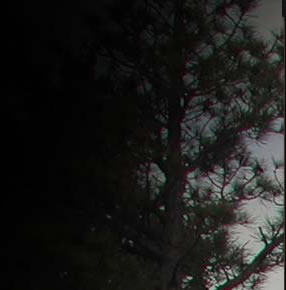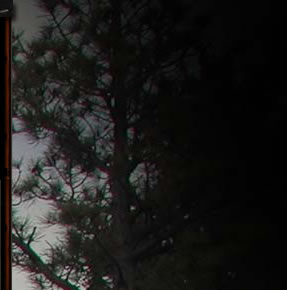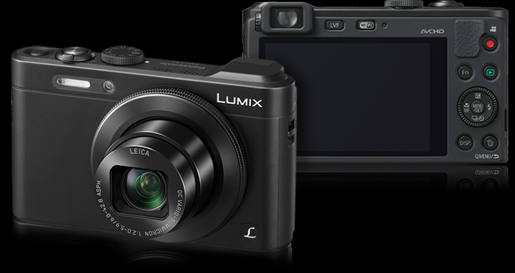


REVIEW: Panasonic Lumix DMC-LF1 12 MP Digital Camera

The Panasonic DMC-LF1 is a unique camera, that technically wildly excels at practically nothing. However, it is an appealing combination in a very small package that competes with the Canon S110 and S120 cameras.
Despite its small size, it has a slightly larger than common 1/1.7 inch sensor, the same size as the cited Canon models and the Panasonic LX-7. Its battery life (CIPA 230 images) is better than the Canon models, but not as good as the LX-7 (CIPA 330 images).
The obvious appeal is the electronic viewfinder and the longer, 7.1 x zoom as compared to the 3.8x LX-7 and the 5x Canon models. Rather than a clip-on lens cap as is the case with the LX-7, it has an integral sliding lens cover like most small compacts, making the camera handier to use.
The larger, heavier LX-7 was and is an excellent camera with a far brighter lens. The LF-1 lens does not compare favorably with the LX-7 f/1.4 – f/2.3 lens that seems to make its own light. Yet, the reach ability of the LF-1 is far from trivia. The LX-7 has a 24-90mm equivalent, while the LF-1 is 28-200mm. While it doesn't necessarily make the LF-1 “better,” it makes it more practical, versatile, and usable. The LF-1 is the same camera as the $699 retail Leica C, without the red Leica logo.
The LF-1 is a competent extreme low-light no-flash camera, but only if you lay off the zoom at keep it at the 28mm widest angle setting. In that case, you have both the f/2.0 brightness and the larger sensor working for you. But, the extra reach comes at a price, for the maximum aperture closes very quickly in concert with increased focal length, listed as follows.

28mm
= f2.0
35mm = f2.4
50mm = f3.3
70mm = f4.2
90mm = f4.7
135mm = f5.5
160mm = f5.6
200mm = f5.9
While the LF-1 starts out at a bright f/2.0, it closes to f/5.9 at maximum zoom, as dim as many inexpensive pocket point and shoots. At that juncture, the primary benefit is not from more light through the lens, it is solely up to the larger sensor. At the 28mm - 35mm level, you have both factors working for you.
The LF-1 does add Wi-Fi and NFC, though, and it is truly a pocket camera. It is a lot of horsepower in about a 6-1/2 oz. package. At its initial launch price of $499, the LF-1 struck me as no bargain, but still much less its overpriced twin, the Leica C. That's changed, though, for now it is about a $230 purchase. At that price point, it is a very appealing package at an attractive price point.
The Canon S120, with the same sensor size, similar form factor but one ounce heavier, currently sells for $399. The Canon has a 24–120mm lens that starts out bright at f/1.8, but hits f/5.7 at its 5x 120mm limit. The longer reach Panasonic LF-1 is a comparative screaming deal, offering not only reach, but the EVF, and longer battery life at over $150 less.
The approx. 7x zoom is a hardly extraordinary by today's standards, but the “Intelligent Zoom” nets you a 14.2x times zoom with usable images and that covers a lot of ground as a practical matter. While the lens offers more optical zoom and little else, the sensor helps out substantially in lower light conditions. While the LF-1's video capability is not as strong as the LX-7, again, you have a lot more zoom that largely compensates for it.
Compared to the typical long-zoom, compact, 1/2.33 inch sensor batch of cameras, the LF-1 adds significant amount of capability. You can shoot in RAW for post-processing, the EVF is a real life-saver in extremely bright outdoor conditions, the 20 mbps 1920 x 1080p (MP4) video is more bitrate than needed for YouTube, that reprocesses video at 8 mbps anyway. You can take 9 meg stills during video as well and the image stabilization on this camera is excellent.
Panasonic's “Intelligent Auto” mode is as good as ever, making this a simple point and shoot in operation if that is your preference. While the “Intelligent Zoom” is just a buzzword for digital zoom, it does do a good job within reason, and this little camera is a good up to 14.3x still and video unit. If you have no intention of going with large prints and want to shoot in the 5 meg “EZ” mode, it is a 20x zoom camera. The lens ring on the camera lets you instantly change ISO modes, and also can be used as step zoom. Inexpensive after-market batteries rated at 1100 - 1200 mAh are readily available (vs. supplied 950 mAh battery) that have already pushed the battery life for me comfortably past 300 still images along with some video.
Those looking for superior image quality with an EVF, compared to this camera, can certainly find it in the 1 inch sensor Sony RX100 III. Yet, the Sony offers a puny 2.9x optical zoom, is quite a bit heavier (10.2 oz.) and sells for about 3-1/2 times the price of this LF-1 at close to the $800 mark. Without the EVF, the Sony RX100 II currently sells for around $650, with a f/1.8-4.9 lens with a still anemic 3.6x zoom.
For my purposes, the Lumix DMC-LF1 is a “Five Star Camera” based on capability for the dollar. It is unfortunate that many reviews force a star rating, for that doesn't mean much as my uses and your uses may be completely different, and most certainly are different.
So,
a brief explanation is in order. I rarely print anything larger than 8
x 10, and my print-published articles rarely fill more than half the page.
For event coverage, I find the 3x – 5x zoom category cameras limiting,
for I want to fill the frame. Video performance is important, but note
that ESPN (for example) broadcasts in 720p: the 1920 x 1080p 30 fps capability
of the LF-1 handily exceeds that. The bitrate of the easier to edit MP4
capture mode (20 mbps) is more than double what YouTube HD can use.
If
you are looking for generally better image acquisition than smartphones,
better images than most 1/2.33 inch sensor cameras, markedly better indoor
no-flash low-light capability at the widest aperture, yet want something
that is truly a small, lightweight pocket camera, this camera is remarkable
at $230. Until you hold it in your hand, it is hard to appreciate how
extremely compact and light (6.7 oz.) this camera is. In terms of capability
for the ounce and capability for the dollar, it is hard not to be impressed
with this camera. I am, for the reasons mentioned here.
Copyright 2014 by Randy Wakeman. All Rights Reserved.

Custom Search



